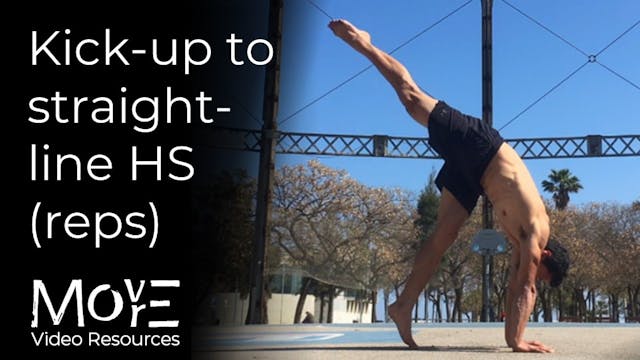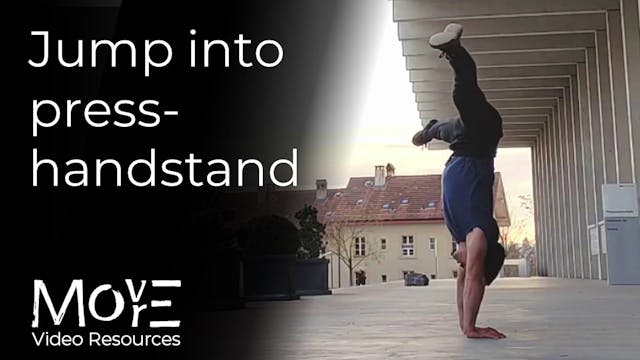Handstand kick-up to wall
Handstand entry & exit
•
1m 48s
THE WHAT:
The 'kick-up to wall' must be developed before the practitioner can effectively practice both supported-alignment and supported-balance back-to-wall drills. A common misconception is that the inability to kick-up to wall is due to a lack in strength, however, this is rarely the case.
More commonly, it is poor understanding & embodiment of both the STRUCTURE and PATTERNING required to perform an effective & EFFICIENCT kick-up. For a more in-depth look at the setup position for the handstand kick-up to straight-line, see the back-to-wall 'Heel-pull' drill.
LEARN MORE (subscriber-only):
https://drive.google.com/file/d/1eCLI9eXv6RtqIG33he6D3aPVrHJNqmib/view?usp=drive_link
___________________
For programming, guidance, & support for your physical practice:
FREE fundamental prehabilitation program: https://www.movemoremp.com
Online Support (1 to 1 coaching): https://movemoremp.com/onlinesupport
Elements (standardised programs): https://www.movemoremp.com/elements
[email protected]
Up Next in Handstand entry & exit
-
Kick-up to straight-line handstand (r...
THE WHAT & WHY:
A simple context for developing the consistency of your kick-up into straight-line HS. The objective is to develop EFFICIENCY: the kick-up should feel as easy as possible, use as little energy as possible, make as little noise as possible on landing and use the REBOUND to re-enter... -
Jump into press HS
THE WHAT:
Whilst this context does not significantly contribute to the straight-arm strength required to perform the full 'Press handstand', it allows development of the "popping" texture required for an efficient jump-up into straddle-handstand position which contributes to calibration of power-... -
Lateral Entrances into Handstand
THE WHAT:
Increasing one's repertoire for entrances into the handstand approaches a more dynamic aspect of inverted balance practice, something easily overlooked when focusing on static-balance projects. Ultimately, we are looking to develop general experience & OPTIONALITY.As the handstand is ...



